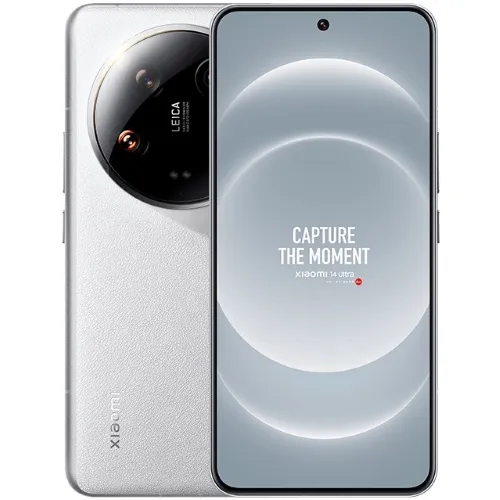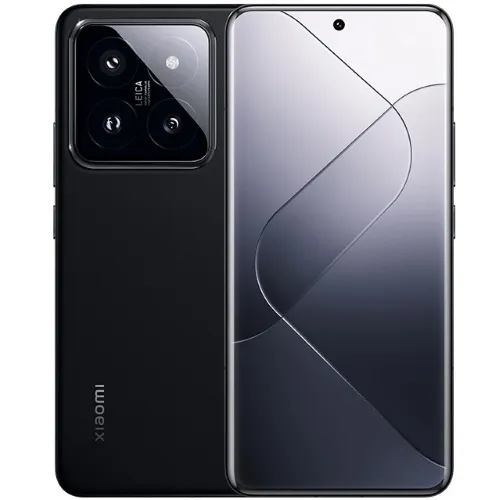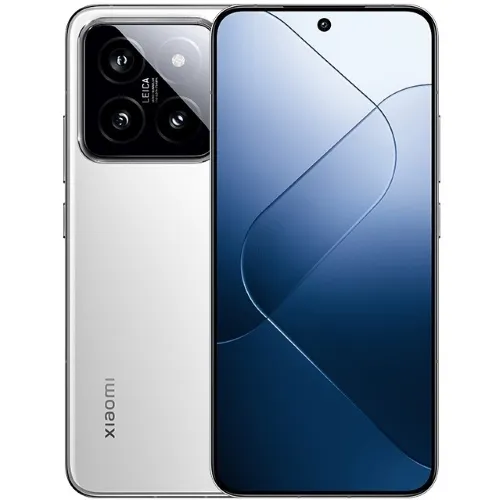10 Best Xiaomi Smartphones to Buy in 2025
Xiaomi smartphones are known for providing great specs at affordable prices. But over time, Xiaomi has also introduced high-end flagship models that compete closely with other top brands.
These premium Xiaomi phones come with higher price tags, but they also pack cutting-edge features and powerful performance. In this article, our team, in Carisinyal, has put together a list of the best and most advanced Xiaomi phones available.
Just a note—this list focuses on Xiaomi phones coming with high specifications and premium features from both the Xiaomi and Redmi series. The POCO series is covered separately in the article below:
1. Xiaomi 14 Ultra

The 'Ultra' suffix in Xiaomi’s series is not merely for show. These devices are the epitome of Xiaomi's flagship line, as seen with predecessors like the Xiaomi 12 Ultra and Xiaomi 13 Ultra.
In 2024, Xiaomi introduced the Xiaomi 14 Ultra. This device excels in various aspects: it offers rapid performance powered by the Snapdragon 8 Gen 3 chipset with options of 12 GB and 16 GB RAM, a durable battery, an impressive display, and most notably, an exceptional camera.
The camera is a feature worth considering. The Xiaomi 14 Ultra boasts an impressive array of cameras in collaboration with Leica, including the new 1-inch 50 MP LYT-900 sensor from Sony, which claims to have better design, faster data readout, and lower power consumption compared to its predecessor, the IMX989 found in the Xiaomi 13 Ultra.
The rear camera setup includes four functional cameras, each with a 50 MP resolution, including a periscope lens known for its remarkable zoom capabilities.
The display is equally impressive. The Xiaomi 14 Ultra features a 6.73-inch AMOLED screen with a resolution of 1440 x 3200 pixels and a refresh rate of 120 Hz. It supports Dolby Vision, HDR10+, and features a peak brightness of 3,000 nits. The screen is safeguarded by Xiaomi Longjing Glass, noted for its robustness.
The battery performance is top-tier. The Xiaomi 14 Ultra is equipped with a 5300 mAh battery that supports all-day usage with normal activities and offers a 90-watt fast charging capability, which can fully charge the battery in about 30 minutes. It also supports 50 W wireless charging and 10 W wireless reverse charging for powering other devices.
As a flagship model, the Xiaomi 14 Ultra comes loaded with high-end features such as IP68 waterproof rating and display-out support, features that are sometimes omitted in other high-end smartphones.
2. Xiaomi 15 Pro

Xiaomi 15 Pro comes with several impressive features that make it a strong competitor in the flagship smartphone market. Its IP68 certification ensures resistance to dust and water, which can provide durability in various conditions.
The 2K LTPO AMOLED display supports 68 billion colors and reaches an incredible 3200 nits of brightness to deliver sharp and vibrant visuals. To enhance durability, the screen is protected by Shatterproof Glass 2024, making it resistant to scratches from sharp objects.
Powered by the Snapdragon 8 Elite SoC, this phone delivers outstanding performance, scoring over 2 million on AnTuTu v10. For photography, it features a triple 50 MP rear camera system, developed in collaboration with Leica to create strong image quality.
Both the front and rear cameras support 4K 60 fps video recording, and the device can record in Log format, which I think ideal for professional video editors.
One of its standout features is the silicon carbide battery, which offers a 6100 mAh capacity without increasing the phone’s size. Charging is equipped with 90W fast charging and 50W wireless charging for quick power-ups.
The USB-C port supports USB 3.2 technology that can allow for faster data transfer and display output. Xiaomi guarantees five major OS upgrades, so the phone stays up-to-date until Android 20.
Despite its strengths, this phone has a few drawbacks. The front camera lacks autofocus, meaning it cannot automatically adjust focus. Additionally, removing pre-installed apps requires extra effort. Lastly, units sold in China do not support e-SIM, which may be a limitation for some users.
3. Xiaomi 14 Pro

Xiaomi 14 Pro is a flagship model renowned for its remarkable display, sleek design, robust performance, and superior camera features.
Launched globally on February 25, 2024, it has a curved 2.5D body and a screen measuring 6.73 inches. It also uses an LTPO AMOLED panel that delivers a crisp 1440p resolution, which is sharper than the standard 1080p found in other models.
Equipped with three 50 MP lenses—including telephoto and ultrawide options—this phone partners with Leica to ensure photographs appear more natural. Additionally, it supports video recording in 8K at 24 FPS in HDR quality that's capable of producing videos with a 10-bit color depth.
These specifications position the Xiaomi 14 Pro as an ideal choice for professionals in the creative industry, including content creators, corporate photographers, and individuals involved in advertising or filmmaking.
Further enhancing its appeal, the Xiaomi 14 Pro features a durable titanium frame and boasts an IP68 rating, ensuring it can withstand submersion in water.
Notably, its charging technology is exceptionally rapid, with a 120-watt capacity that can recharge the battery fully in just 18 minutes.
Despite its strengths, the Xiaomi 14 Pro does have some limitations, such as the absence of a 3.5 mm audio jack—a common omission in flagships—the considerable weight of 223 grams, and the lack of an external memory slot.
Priced at around 650 euros, it faces stiff competition from the Samsung Galaxy S24, particularly due to the Samsung DeX feature, which offers an unrivaled desktop mode.
4. Xiaomi Mix Fold 4

Xiaomi Mix Fold 4 has a slim design, which is typical of foldable phones, but it remains sturdy due to its aluminum frame.
It also has an IPX8 certification, which makes it resistant to water. The hinge is crafted from stainless steel and carbon that can create both durability and a lightweight structure. Its overall construction is solid, with no noticeable gaps when the screen is folded.
The main display is a 7.98-inch LTPO AMOLED panel that supports 1.07 billion colors to provide a wider viewing experience compared to many competing foldables.
The cover screen also utilizes LTPO AMOLED technology and can display 68 billion colors. It is protected by scratch-resistant and impact-resistant glass, enhancing its durability.
Performance is powered by the Snapdragon 8 Gen 3 SoC, with an AnTuTu v10 score surpassing 2 million. On the back, the phone is equipped with four cameras, including two telephoto lenses—a rare feature among foldable smartphones. The main camera benefits from a Leica-designed glass layer, which enhances image quality for better photography.
Connectivity includes an infrared blaster, USB 3.2 with display output support, and satellite communication capabilities. The battery has a capacity of 5100 mAh that can support all-day usage. It also supports 67W fast charging, reaching 31 percent in just 10 minutes for quicker and more convenient recharging.
Despite its strengths, the foldable screen still shows visible creases, a common issue with this type of device. It also lacks stylus support, which would have been a valuable addition for users who need enhanced productivity features.
5. Xiaomi 15

Xiaomi 15 has a relatively compact body, so it's a great choice for users who prefer smaller devices. Its durability is solid, thanks to a glass body and an aluminum frame, and it meets IP68 certification for water and dust resistance.
The phone features an LTPO OLED display capable of showing 1.07 billion colors while supporting the Dolby Vision standard for a better viewing experience. Performance is powered by the Snapdragon 8 Elite SoC, with an AnTuTu v10 score approaching 3 million.
For photography, the device is equipped with a 50 MP triple-camera setup enhanced by Leica technology. The rear camera can record videos in Log format, which is ideal for professional video editing. Both the front and rear cameras support smooth 4K recording at 60 fps which is great for content creation.
Connectivity is well-equipped, including a USB 3.2 port for fast data transfer. The battery is a 5400 mAh silicon carbide unit that offers high capacity without adding too much weight. Charging is equipped with 90W fast wired charging and 50W fast wireless charging.
Software support is guaranteed, with an upgrade path to Android 19 and security updates for five years.
However, the front camera lacks autofocus, which may affect selfie quality. Additionally, the design remains largely unchanged from the previous Xiaomi 14, offering little visual difference between the two models.
6. Xiaomi 13 Ultra

The Xiaomi 13 Ultra, released as Xiaomi's premier model in 2023, boasts top-tier specifications across the board. Powered by the Snapdragon 8 Gen 2 chipset, it features eight cores with speeds up to 3.2 GHz and supports stable 5G connectivity.
With up to 1 TB of internal storage and 16 GB of RAM, the Xiaomi 13 Ultra runs apps and games seamlessly. As expected in a high-end smartphone, it doesn’t just excel in performance but also in its photographic capabilities.
The Xiaomi 13 Ultra's camera setup includes four 50 MP lenses and is a product of Xiaomi's collaboration with Leica, a leader in professional camera systems.
The main camera features a 1-inch sensor that adjusts between f/1.9 and f/4.0 apertures depending on lighting conditions and is equipped with advanced technologies like HyperOIS, PDAF, Laser AF, and TOF 3D for capturing sharp and detailed images and videos.
Moreover, it includes a periscope telephoto lens with 5x optical zoom, a telephoto lens with 3.2x optical zoom, and an ultra-wide lens with a 122-degree field of view. Its camera capabilities have garnered high praise for their versatility and quality.
The Xiaomi 13 Ultra also impresses with its 6.73-inch AMOLED display, which features a 1440 x 3200 pixel resolution and a 120 Hz refresh rate.
It supports Dolby Vision, HDR10+, and Pro HDR Display 2.0, ensuring vibrant colors and stark contrasts. Protected by Gorilla Glass Victus, the display is resistant to scratches and impacts.
The phone's design is elegant, with eco leather on the back and aluminum frames, and it is IP68 certified, making it dust and water-resistant up to a depth of 1.5 meters for 30 minutes.
Its 5000 mAh battery supports both wired and wireless fast charging up to 90W, ensuring long-lasting battery life.
The Xiaomi 13 Ultra is an excellent choice for anyone seeking the finest in performance, camera technology, and display. It also features an under-screen fingerprint sensor, NFC, infrared port, stereo speakers, and high-quality audio. Unfortunately, this phone is only available in some countries.
7. Xiaomi 14

This phone is truly for those looking for Xiaomi’s flagship devices. This model is one of the first to operate on HyperOS, which is based on Android 14. Powered by the Snapdragon 8 Gen 3, the newest flagship chipset for 2024, the Xiaomi 14 aligns with the high standards set by other leading smartphones.
What sets this device apart is its ultra-fast charging capability and its partnership with Leica to enhance photo quality.
Xiaomi 14 has several upgrades over its predecessor. For instance, the front camera now records in 4K at 60 FPS—an impressive leap from the previous model’s 1080p at 30 FPS.
Additionally, the Xiaomi 14 includes a faster and more advanced USB-C 3.2 port for quicker data transfer between devices. However, note that it doesn't have a desktop mode feature as strong as that found in Samsung's flagships.
8. Xiaomi Mix Fold 3

Folding phone technology continues to be a major trend in 2024, and Xiaomi has kept up with this trend by introducing its latest foldable model in 2023.
This foldable phone excels in long-distance photography, featuring two telephoto cameras. Each camera offers a 10 MP resolution—one with a 75 mm focal length providing 3.2x optical zoom, and the other with a 115 mm focal length for 5x optical zoom.
Both cameras are also equipped with Optical Image Stabilization (OIS) to ensure clarity even when the device is moving during a shot.
In contrast, competitors like the Samsung Galaxy Z Fold5 only include one telephoto camera. Additionally, the Xiaomi Mix Fold 3 supports a 67-watt fast charging capability, which is significantly quicker than many others.
It also provides fast wireless charging at 50 watts, allowing it to fully charge in just 55 minutes—one of the quickest charges available for foldable phones.
The device features larger main and cover screens than its competitors, measuring 8.03 inches and 6.56 inches respectively. The phone has a slim design, measuring only 6.1 mm when unfolded and 13.4 mm when folded.
According to Xiaomi, this slimness is due to a new hinge system consisting of 198 parts, which reduces the phone’s space by 17 percent.
The base model of the Xiaomi Mix Fold 3, with 12 GB of RAM and 256 GB of storage, was launched in China at a price of 9,000 yuan. However, it lacks certain features like a dedicated desktop mode, which is available in models like the Galaxy Z Fold5, and it does not have dust or water resistance certification.
9. Xiaomi Mix Flip

Xiaomi Mix Flip stands out with its premium design, featuring a full glass body, an aluminum frame, and stainless steel hinges. Its cover screen is large and fully functional that serves more than just as a notification panel. When folded, the screen leaves no gaps, and the crease is barely visible.
Both the main and cover displays are impressive, which deliver over 1000 nits of brightness for excellent visibility outdoors.
Despite having a 4,780 mAh battery, its longevity is commendable, lasting nearly 14 hours of streaming in GSM Arena's tests. Charging feels efficient with 67W fast charging, which powers the phone fully in under an hour.
Audio performance is another highlight, with clear vocals, well-balanced treble, and an overall solid sound profile. The HyperOS software enhances the flip mode experience and offers various customization options for the cover display. Performance is driven by the Snapdragon 8 Gen 3 chipset.
Camera quality is impressive for both the front and rear lenses to deliver sharp and vibrant photos and videos in various lighting conditions.
However, this phone is not without its drawbacks. It doesn't have an ultrawide camera, opting instead for a 2x telephoto lens. The front camera also lacks autofocus, so it requires manual adjustments.
Another concern is its durability—without an IP rating, its resistance to dust and water is uncertain. Additionally, while the device handles daily tasks well, it may throttle under heavy workloads, which is a common issue among flip phones.
10. Xiaomi 13 Pro

The Xiaomi 13 Pro is packed with numerous exciting improvements and updates. As the most advanced model in the Xiaomi 13 Series and the successor to the previous generation, it has remarkable features starting with its camera setup, impressive performance, and a high-quality screen.
Leica, the renowned German camera company, provides the lenses for the Xiaomi 13 Pro to create top-notch image quality. The phone features three high-resolution cameras on the back, each fully equipped for superior photography.
The main camera is a 50.3 MP (f/1.9) with a Sony IMX989 sensor and Optical Image Stabilization (OIS). There's also a 50 MP (f/2.0) telephoto camera that offers 3.2x optical zoom and Phase Detection Auto Focus (PDAF).
Additionally, a 50 MP (f/2.2) ultrawide camera captures a broad 115-degree field of view. For video enthusiasts, the device supports recording in 8K at 24 fps or 4K at 60 fps.
Performance is another highlight. The Xiaomi 13 Pro uses Qualcomm's latest and greatest chipset, the Snapdragon 8 Gen 2, ensuring rapid processing speeds. It is available with 8 GB to 12 GB of RAM and 128 GB to 512 GB of internal storage that can provide ample space and power for all uses.
The display is also great. The phone uses a 6.73-inch OLED LTPO panel that achieves QHD+ resolution. The screen's capabilities are comprehensive, including a 120 Hz refresh rate, HDR10+, Dolby Vision, and a peak brightness of 1,900 nits, capable of displaying up to 1 billion colors.
The advantages of the Xiaomi 13 Pro are extensive. Additional features include IP68 certification, making it resistant to dust and water, 120W fast charging, and robust connectivity options. These elements combine to make it a highly desirable device for tech enthusiasts.
Sophisticated smartphones don't have to be expensive. With these top 10 Xiaomi models, you can own an affordable yet powerful and well-equipped phone. Interested?
